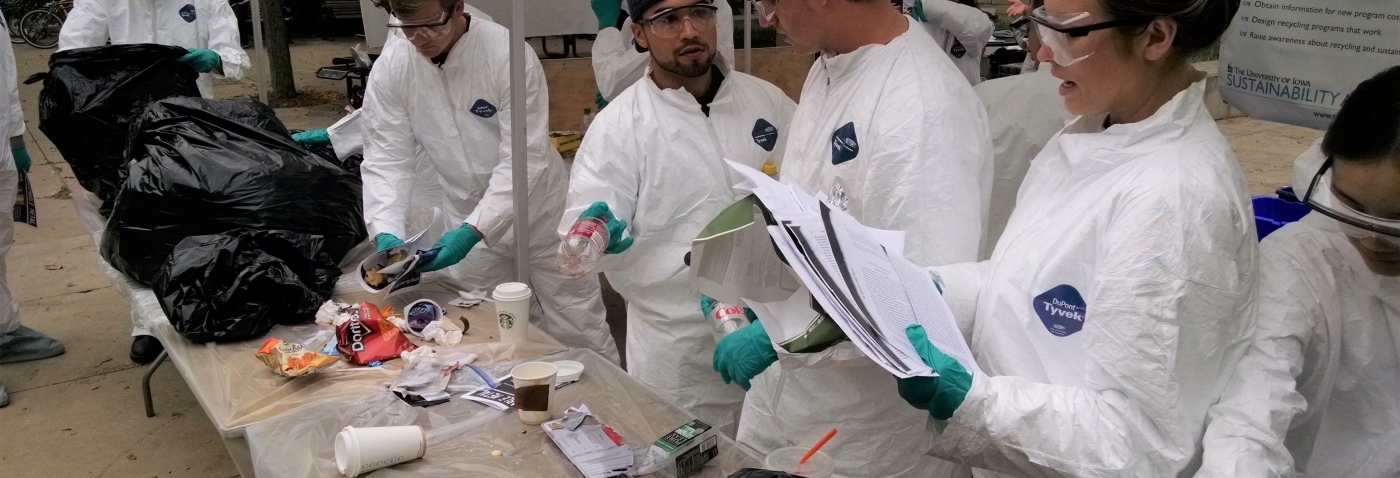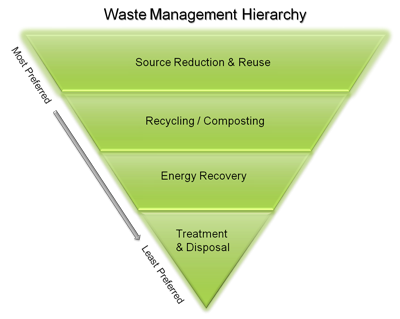The City of Iowa City has voted to ban all cardboard...
College of Liberal Arts & Sciences

In 2010, the University of Iowa set a goal to foster a culture oriented to reducing waste, increasing recycling, facilitating composting of organic waste, and enhancing green purchasing practices to achieve a goal of 60% waste diversion by 2020. Below is our progress towards that goal.
Waste reduction is the highest priority in the waste hierarchy, followed by reuse. Waste prevention results in the most benefits for the UI, from avoiding purchasing and disposal costs, to preventing the negative enviromental and social impacts associated with the extraction, processing, manufacturing, transportation, consumption, and disposal of those products. Though this is not an exhaustive list, below are examples of waste reduction and reuse practices that have been implemented at UI:

The UI has increased its recycling rate from 23% in 2010 to 36% in 2020.
The UI diverts over 14 times more organic waste for composting and biodigestion than it did in 2010. Primarily through the installation of food pulpers in major dining facilities (including UIHC), the UI increased organics collection from 65,000 pounds in 2010 to 1.2 million pounds in 2019 and 957,000 pounds in 2020.
Based on available data, in 2010, the UI diverted 23% of its waste from the landfill. In 2020, the UI achieved a diversion rate of 36%. It should be noted that the 2010 and 2020 data do not include several types of waste generated on campus due to the difficulty of optaining weight data for these waste streams, including but not limited to, construction and demolition waste, Surplus property, and yard waste (tree trimmings, grass, leaves).
Additionally, waste diversion rates do not account for waste reduction or reuse initiatives which prevent waste from being generated in the first place.
It is important to understand the limitation of diversion rates as the single measure towards waste goals. The example below illustrates how waste reduction efforts can be diminished by the diversion rate metric.
A waste audit is an event where the contents of a building's waste is examined in order to understand what's being thrown away and what the potential is for reduction, reuse, or diversion.
By performing waste audits, we have learned that our original goal of 60% waste diversion was not reasonably achievable. Base on our waste stream profile, which include UI Health Care facilities, the maximum achievable campus-wide diversion rate would be 61% (assuming every single recyclable and compostable material could be captured). This is largely due to the limitations in recyclability of health care waste, which accounts for approximately half of all campus waste.
The City of Iowa City has voted to ban all cardboard...
Tiny Trash is a program that is being implemented in buildings across campus. Participants in Tiny Trash trade in their desk-...